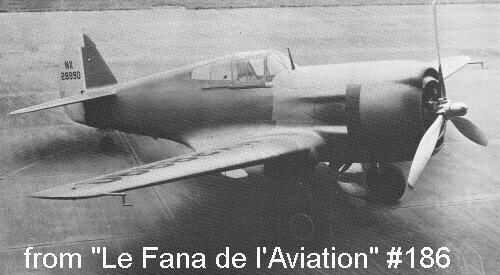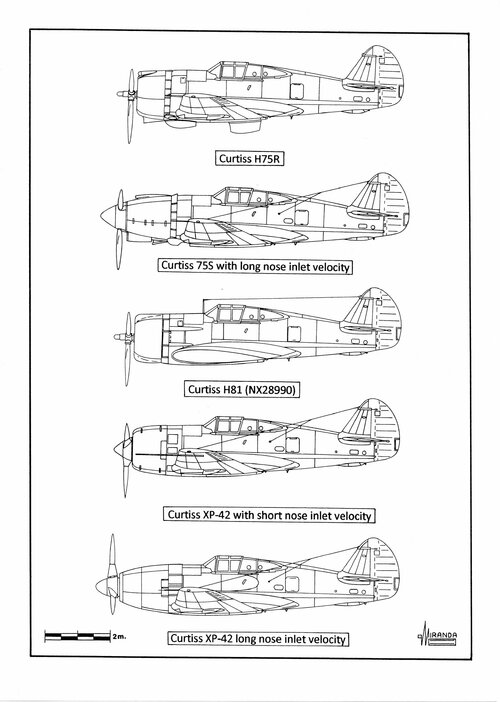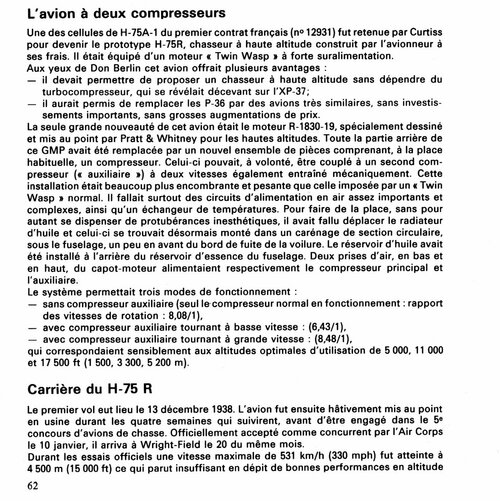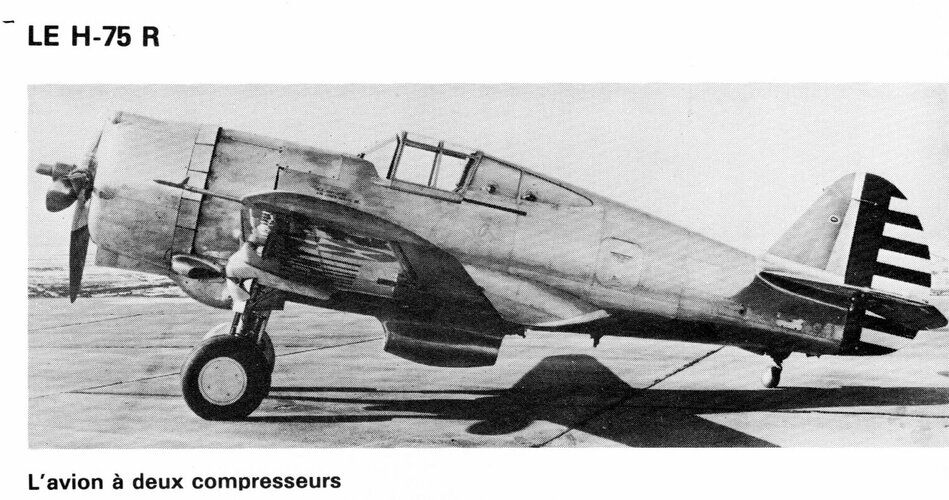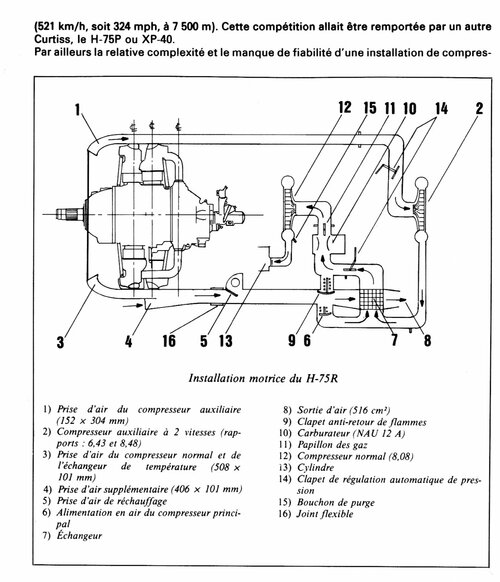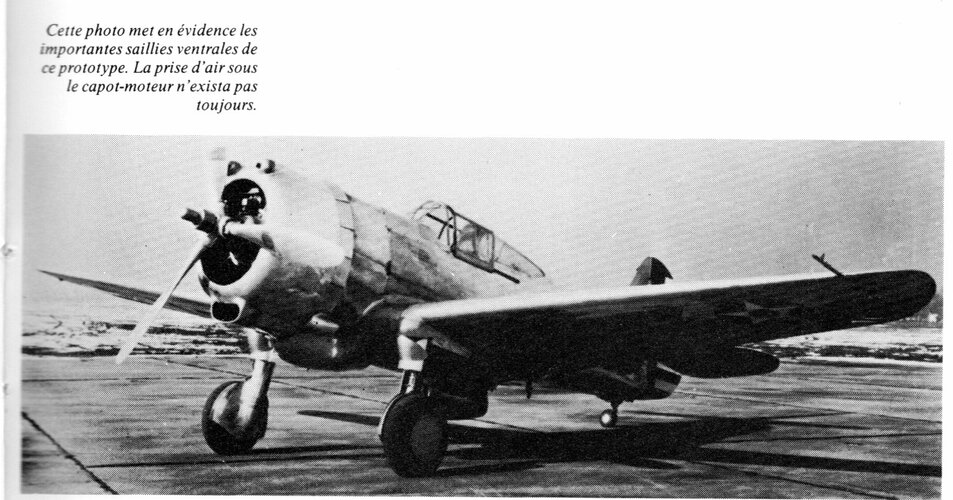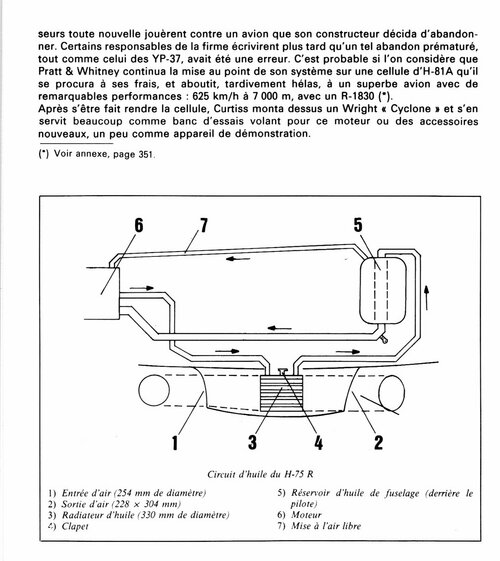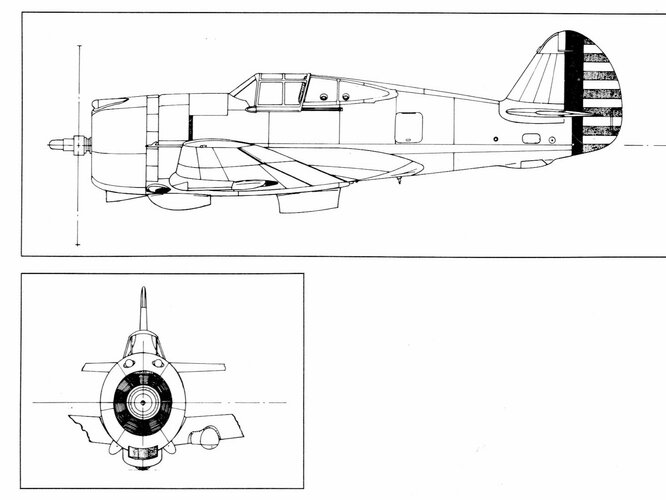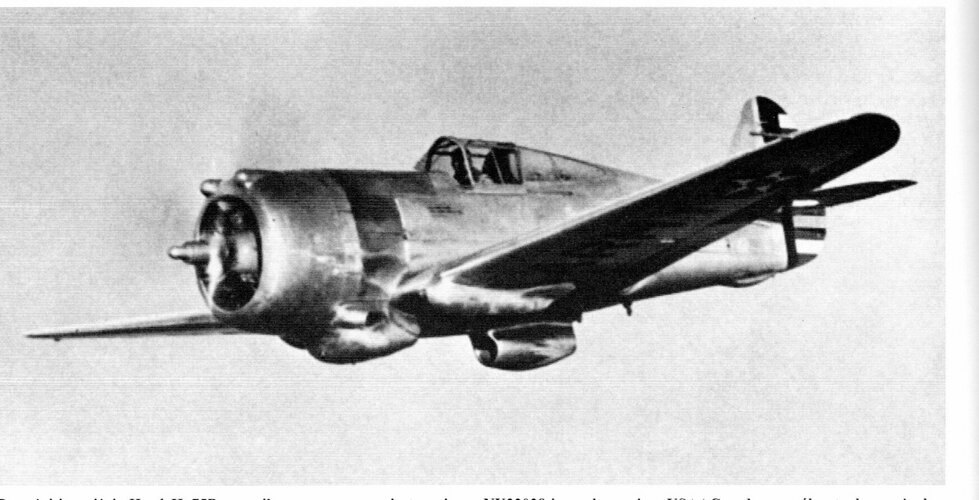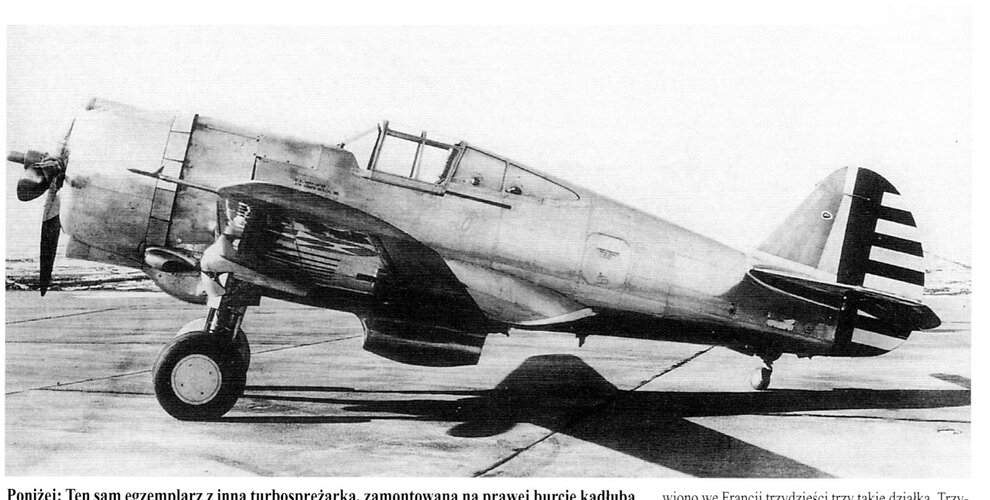The H75 inadequate performance at high altitude was a constant source of concern for the Curtiss Airplane Division staff.
In 1938 one H75 A-1 was modified as the H75 R high-altitude prototype, powered by one R-1830-SC2-G radial engine driving two centrifugal turbochargers, with ventral intercooler. During flight tests conducted in January 1939 the H75R reached a top speed of 330 mph flying at 15,000 ft. The USAAC considered insufficient the increase of performance and the H75 R unsuitable for operational service, due the complexity of the new propulsion system.
Curtiss continuing to perfect the concept, in 1943 the NX 28990 airframe of a H81A was powered by one R-1830-SSC7-G radial engine driving two centrifugal compressors housed in a new streamlined cowling. During flight tests conducted between July and October 1943, the high-altitude prototype reached a top speed of 389 mph and 25,000 ft of ceiling.

